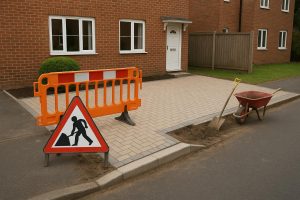Installing a fence can be an exciting project for homeowners looking to enhance their property’s privacy, security, or aesthetic appeal. However, like many outdoor projects, it comes with its own set of challenges. Whether you’re building a new boundary or replacing an old fence, you may find certain aspects more difficult than anticipated. If you’re considering getting a new fence, it’s worth understanding the challenges involved so you can be well-prepared or know when to call in the professionals.
In this blog, we’ll explore the hardest parts of installing a fence, from preparation to the final touches, and provide insights into why hiring a professional service like Mammoth Services can make all the difference.
1. Planning and Measuring the Area
The first step in any fence installation project is planning and measuring the area. It might sound simple, but ensuring your measurements are accurate is crucial to avoiding costly mistakes. Misjudging your property boundaries, failing to account for slopes, or even overlooking the local regulations on fence heights and placements can complicate the process.
One common issue is underestimating the total length of the fence, leading to insufficient materials. Additionally, measuring around uneven terrain or large obstacles such as trees can make the task even more difficult. Professional landscapers, like those at Mammoth Services, can ensure your measurements are precise and compliant with local laws, saving you time and potential legal headaches.
2. Dealing with Underground Utilities
One of the most challenging (and critical) parts of installing a fence is knowing where your underground utilities are located. The last thing you want is to accidentally dig into a gas line or cut through your home’s power supply. Before any digging begins, it’s essential to identify where your utility lines run to avoid accidents.
This process can be time-consuming and requires careful coordination with utility companies. A professional landscaping service like Mammoth Services will always check for underground utilities before starting any digging, ensuring your installation is safe and hassle-free.
3. Digging the Fence Post Holes
Digging post holes is often the most physically demanding part of the installation process. Fence posts need to be set deep enough to provide stability—typically around 2 to 3 feet deep—depending on the type and height of the fence.
If you’re working with rocky or compacted soil, this can be extremely challenging without the right tools. Moreover, digging to the appropriate depth in clay soil or wet conditions can cause posts to shift over time, leading to instability. At Mammoth Services, we use specialised equipment to ensure each post hole is dug correctly and efficiently, giving your fence the foundation it needs to stand strong for years to come.
4. Aligning the Posts
Once the holes are dug, placing the posts in perfect alignment is key to a straight, professional-looking fence. Even the slightest misalignment at the start can cause the entire fence to look crooked. Additionally, ensuring each post is level vertically can be tricky, especially on uneven ground.
Fence posts also need to be secured firmly in the ground, typically with concrete. If the posts are not installed correctly or if the concrete doesn’t set properly, it can compromise the structural integrity of the entire fence. Professional installers at Mammoth Services use proven techniques to ensure all posts are perfectly aligned and secured.
5. Installing Panels or Rails
After the posts are in place, the next challenge is installing the fence panels or rails. This process requires precision, as each panel must be evenly spaced and level with the next one. If you’re working with timber or composite panels, they can be heavy and difficult to manoeuvre on your own.
Moreover, if you’re installing a custom design or working with intricate materials like wrought iron, the level of skill required increases. A professional landscaping service can help you avoid issues with alignment, gaps, or uneven heights by ensuring the panels or rails are installed with care and attention to detail.
6. Weather Considerations
Mother Nature can also throw a wrench into your fence installation plans. High winds, rain, or even extreme heat can make the job more difficult and potentially damage your materials. For example, installing fence posts in wet conditions can lead to issues with shifting as the ground dries. Alternatively, working in extreme heat can make outdoor manual labour more exhausting and less efficient.
Professional landscapers, like the team at Mammoth Services, are skilled at working in all weather conditions and can help you navigate the challenges that the weather might bring.
Conclusion: Why Hire a Professional Fencing Service?
While it’s possible to install a fence on your own, the process is often more complicated than it appears. From accurate planning and measuring to safely digging post holes and ensuring everything is perfectly aligned, there are several challenges that can arise.
By hiring a professional landscaping team like Mammoth Services, you can avoid the common pitfalls of DIY fence installation and ensure your new fence is installed to the highest standards. Whether you’re working with wood, vinyl, metal, or composite materials, our team has the expertise and equipment to make the process smooth and stress-free.
If you’re considering getting a new fence and want a reliable, professional service, contact Mammoth Services today. Let us help you create a durable, beautiful fence that complements your outdoor space and stands the test of time.

